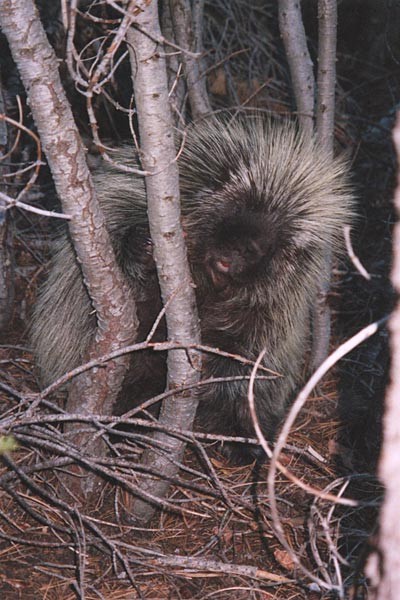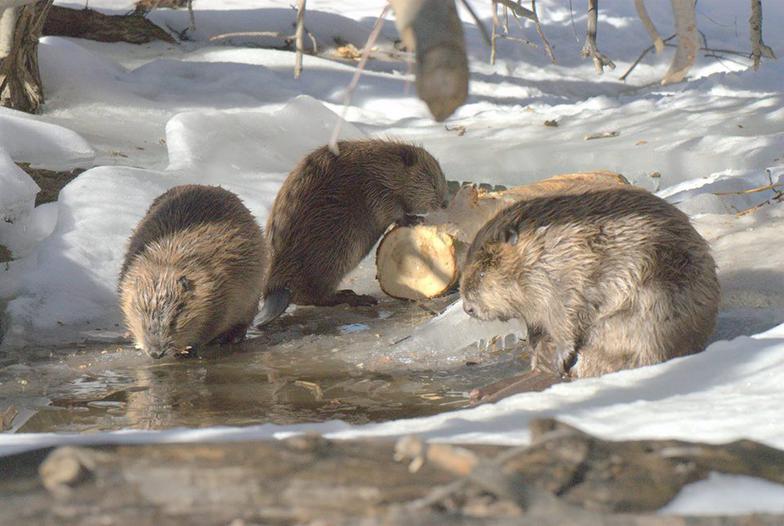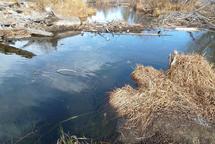saveourplanetearth.com
Call us: (775) 831-1331
Unusual Wildlife Sightings at Lake Tahoe
It’s probably safe to say that most everyone living in or visiting Lake Tahoe has encountered a Steller’s jay, a mountain chickadee or a coyote, but what about the creature that is more elusive, lesser known or more unusual? Here is a look at a few species we don’t run across every day:
Paiute Sculpin
What lies beneath the waters of Lake Tahoe? Probably that which comes to mind most often would be the sport fish that have been introduced to the lake, including mackinaw trout, kokanee salmon, rainbow trout and brown trout.
Lesser known native species include the mountain whitefish, Tahoe sucker, speckled dace, Lahontan tui chub and the Paiute sculpin.
I asked Geoffrey Schadlow, Director of UC Davis Tahoe Environmental Research Center to suggest an interesting fish in the lake and he directed me to the Paiute sculpin.
The Paiute sculpin is a small freshwater fish, averaging 4 to 5 inches long, and the most abundant bottom dweller in the Eastern Sierra.
Small and drably colored, it hides between rocks and sticks on the bottom. It dwells in rocky areas around the shore when breeding, to hide eggs among the rocks in the shallower regions. It is most active at night, eating algae and preying upon aquatic insects, larvae and smaller fish dwelling in rocky substrate.
Beaver
A semi –aquatic rodent that dwells along the shore in creeks and rivers, building elaborate homes of sticks and mud, considered a nuisance by misinformed folks is the beaver.
Sherry Guzzi, a North Lake Tahoe resident, participated in co-founding the Sierra Wildlife Coalition in October of 2010 when a family of beavers was killed by Placer County Department of Public Works in Kings Beach, a traumatic experience for Sherry and other residents and elementary students who had come to love the beavers.
Since then, she and her organization have been instrumental in helping to install what is known as a pond leveler in Taylor Creek, as well as other areas, after the forest service pulled out a dam built by another family of beavers, putting their survival at risk.
The pond leveler is a relatively simple installation and costs only about $200, providing a reasonable and fair alternative to simply eradicating the beavers. For more information on this system and to learn more about beavers, visit the coalition’s Facebook page.
Beavers live in almost every creek around Lake Tahoe and Truckee, building dams and lodges that help create wetlands and habitats for fish and other marsh-dwelling wildlife. The piles of sticks and logs amassed by beavers actually help control sediment that would otherwise reach Lake Tahoe.
Long-tailed Duck
A duck that would normally be spending the winter off the coast of Alaska has been spotted hanging around in Lake Tahoe. A lone long-tailed duck, seen in the Kings Beach area, is being monitored by Will Richardson, Tahoe Institute for Natural Science, who is kept informed of unusual sightings by knowledgeable area birders.
The long-tailed duck is a medium-sized sea duck, striking in appearance, which varies dramatically by season.
It breeds in the arctic in the summer, migrates south in the winter along both coasts of the United States. In the Pacific, it generally over-winters in Alaska, occasionally making its way further down the coast.
This isn’t the first time the area has seen a stray long-tailed duck — the first Tahoe record dates back to 1955. Another sighting was recorded in 1975 but most currently, in 2007 a pair was spotted by visitor, Jim Lomax at the Camp Richardson area.
In 2013, Granite Bay resident, Bruce Webb, identified a pair and in early winter 2014 a lone female was seen in a pond in Truckee by Diane and Steve Rose.
Porcupine
He’s out there somewhere but only the most fortunate are going to be able to find the porcupine. Ann Bryant, Executive Director of the Bear League, is one of those fortunate few. Ann lives on the West Shore of Lake Tahoe and regularly has porcupines wander through her backyard.
The porcupine is a slow-moving rodent and a common resident of coniferous forests. He wears a dense coat of barbed quills, helping to protect him from predators. He does not shoot his quills as previously believed, rather they detach easily from his body when touched, the quills becoming embedded in the unfortunate animal that attempts to tangle with him.
He can fall to predators, however, including coyotes, mountain lions or great horned owls and, of course, cars. If you happen to find an injured porcupine, please call Ann Bryant of the Bear League. She is available to aid in the rescue of any type of animal.
The porcupine is an herbivore, eating leaves, twigs, clover, wildflowers, fruit, even clay and will eat bark in the wintertime. Porcupines are generally nocturnal but can be seen foraging in the daylight hours as well.
He is a docile animal, trusting and playful. He uses caves, piles of rock or cavities created by downed trees for shelter. He weighs from 12-35 pounds and typically lives 5-7 years in the wild but, in the right conditions, can live as long as 20-25 years.
Wolverine
In 2008, a grad student from Oregon State University was conducting research in the Tahoe National Forest on the effects of landscape change on the American marten — a mammal in the same family as weasels, badgers and wolverines, when one of the motion-sensitive cameras captured the image of a wolverine, setting off a flurry of activity by biologists and researchers, as the wolverine has not been documented in the Sierra since 1922.
Over two dozen documented sightings of the wolverine have occurred since then, the latest being in November in the Tahoe National Forest near Fordyce Lake, about 15 miles southwest of where it was originally seen.
DNA analysis completed in 2008 showed that it was a male sharing the genetic traits of wolverines found in the Rocky Mountains but it is not known how he ended up in this region.
More DNA has been collected from the area of the recent sighting and is currently being analyzed by the US Forest Service Rocky Mountain Research Station in Missoula, Montana to determine if this is the same individual.
The wolverine is a stocky and muscular carnivore, resembling a small bear with large paws, short legs and thick, oily fur that resists frost.
This animal was once found throughout the Sierra and Rocky Mountains but was nearly wiped out by the 1930s due to unregulated trapping. Currently, only 250-300 wolverines remain in the lower 48 states. Larger populations exist in Alaska and Canada.
We may never know how this resilient creature came to be in our area, if he traveled here or was perhaps released. California biologists are hoping that he is successful in beginning a population, but with a typical lifespan of 5 to 13 years, he may be running out of time to find a mate.
Beaver family from the Taylor Creek area, South Lake Tahoe
Photo courtesy of Sherry Guzzi, Sierra Wildlife Coalition
Beaver lodge, Taylor Creek, South Lake Tahoe
Photo courtesy of Sherry Guzzi, Sierra Wildlife Coalition
Long-tailed duck pair
Photo courtesy of Will Richardson, Tahoe Institute for Natural Science
Lake Tahoe porcupine
Photo courtesy of Ann Bryant, the BEAR League






